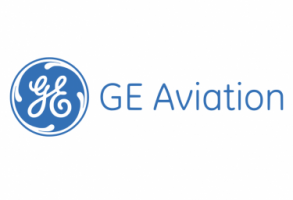Steam and Gas Turbine Report 2018 - Industries ,Technologies & Markets - ResearchAndMarkets.com
The "Steam and Gas Turbine Report 2018 - Industries ,Technologies & Markets" report has been added to ResearchAndMarkets.com's offering.
Steam turbines and gas turbines occupy parallel but different market segments. The turbine market will grow at a cagr of 4.4%, due to the continued increase in coal-fired and gas-fired power capacity, industrial expansion in the developing world and tightening AQ controls. China and India are pruning back on new coal-fired plants, but they are not stopping. Turkey, Indonesia and Bangladesh are going large on coal, and the United States is up-grading large chunks of its big coal-fired fleet to supercritical technology. This activity means more, advanced class steam turbines. Developments of gas turbines are expected in China.
Highlights:
- Market estimates and forecasts of sales of steam turbines and gas turbines in $ to 2022.
- About half the population of each type of turbine is used in power generation - half in oil & gas, industry and marine - with aviation using aeroderivative GTs.
- China produces over half the world's steam turbines, with Shanghai Electric, Dongfang and Harbin Electric the global leaders.
- GE and Siemens dominate the GT market, but new threats to their dominance are emerging.
- Production and off-take of GTs have lagged far behind in China, because of the supremacy of coal. This is changing as the country expands its relatively small gas share. Shanghai Electric and Harbin have already bought into GT technology with acquisitions and partnerships.
- Mergers and acquisitions are described and newcomers are flagged.
- There have been significant advances in turbine technologies, with G- and H-class STs and GTs meeting supercritical criteria of higher temperature and pressure. This has eroded the long-held dominance of F-class turbines and G- and H-class turbines are growing their shares.
- To meet energy and environmental conservation targets, efficiency is the dominant criterion for turbines today.
- Unexpectedly, instead of closing down inefficient coal power plants, many US owners have been converting them to supercritical base-load plants with G-or H-class turbines.
- Despite the rise of the advanced G- and H-class turbines, the long established F-class retains popularity among a segment of owners, as a well-established, proven performer, suitable for plants up to 500 MW.
- Aeroderivative turbines have been used for peaking but substantial new improvements in start-up times and ramp rates are making frame turbines more competitive for peaking.
Companies Mentioned
- ACT
- Alstom
- Ansaldo
- Ansaldo Energia
- BHEL - Bharat Heavy Electrical Ltd
- Brush
- China Dongfang Electric Corporation, DEC
- China Huadian Corporation (CHD)
- Chinese Steam Turbines
- Dongfang Turbine Company (DTC)
- Doosan
- Dresser-Rand
- GE
- Hangzhou Steam Turbine Co Ltd
- Harbin Electric Co Ltd
- Harbin Turbine Company (HTC)
- Kawasaki Gas Turbines
- MHPS, Mitsubishi Hitachi Power Systems
- Mitsubishi Heavy Industries Compressor Corporation
- Rolls-Royce
- Russian Gas Turbines
- SIEMENS
- Shanghai Electric Co Ltd
- Siemens
- Solar Turbines
- The Chinese companies
- Toshiba
- UEC United Engine Corporation
- United Engine Corporation (UEC)
For more information about this report visit https://www.researchandmarkets.com/research/3g3w3b/steam_and_gas?w=4
View source version on businesswire.com: http://www.businesswire.com/news/home/20180302005520/en/






